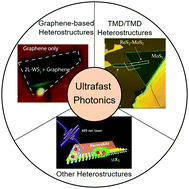2D van der Waals heterostructures: processing, optical properties and applications in ultrafast photonics
Abstract
The investigation of van der Waals (vdW) heterostructures has been becoming an attractive research topic due to their unique electrical, optical and magnetic properties. The vdW heterostructures are generally constructed from stacks of atomically thin two-dimensional (2D) materials and their performance is closely dependent on the constituent 2D materials and the physical interactions between these layers. Importantly, a lot of interesting progress of vdW heterostructures in the electrical, optical and magnetic properties has been achieved recently, which lays a solid foundation for the fundamental research of this field and their future applications. In this review, a series of preparation methods of vdW heterostructures are introduced and the research on ultrafast exciton dynamics in vdW heterostructures is summarized and discussed. Furthermore, the nonlinear optical properties of vdW heterostructures and their applications in ultrafast lasers are also reviewed together with the challenges and future opportunities in this research field. This review aims to present a thorough summarization of the research progress of vdW heterostructures in ultrafast photonics, in order to promote the development in this field.



 Please wait while we load your content...
Please wait while we load your content...